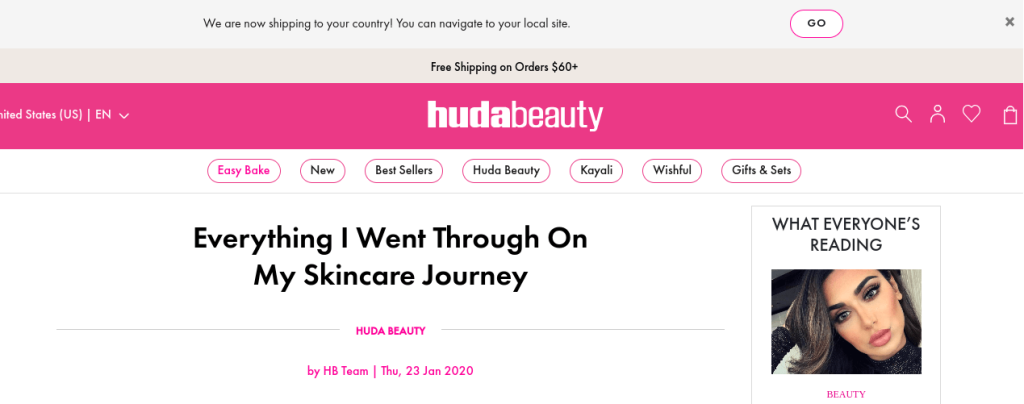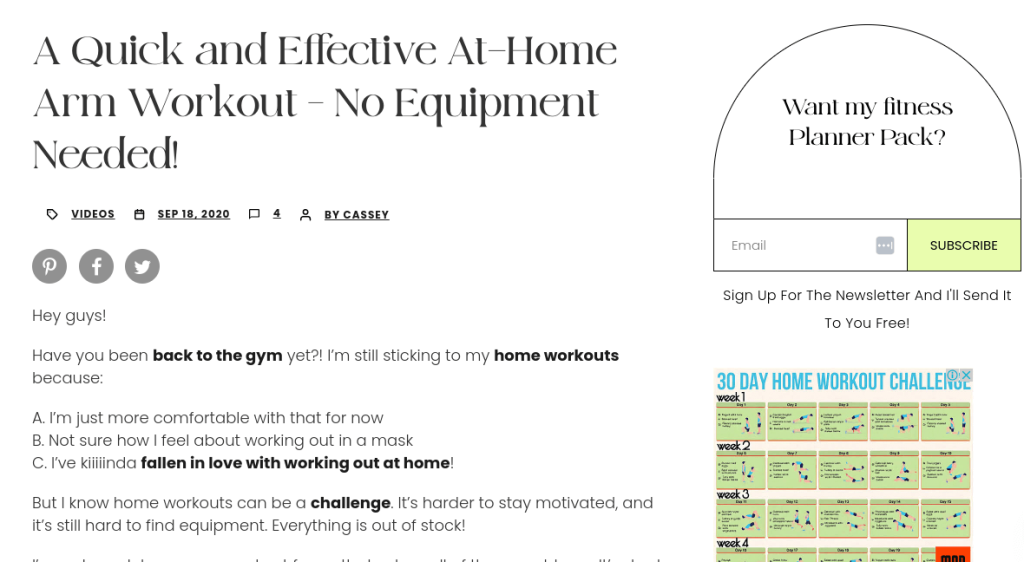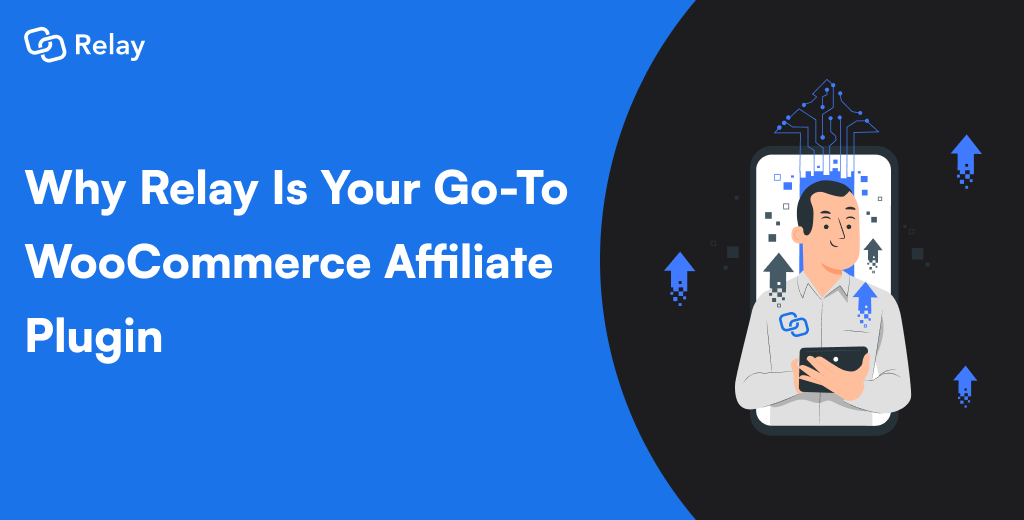With product reviews, promo codes, and curated links dominating today’s content landscape, storytelling in affiliate marketing is what truly sets successful creators apart. More than just a buzzword, storytelling marketing is a reliable tactic that builds engagement, boosts credibility, and drives real conversions.
In a world flooded with offers, it’s the story-driven affiliate content that connects emotionally and turns clicks into lasting trust and loyal buyers.
This blog dives into the power of storytelling marketing, exploring how emotional narratives and relatable experiences can transform your affiliate links into genuine recommendations.
We’ll cover the best affiliate storytelling techniques, how to use emotional marketing in affiliate content, and the most effective formats for story-based affiliate blog content.
You’ll also find real-world examples of successful affiliate campaigns and learn exactly why storytelling boosts affiliate conversions.
Ready to craft affiliate content that sells and converts? Let’s get started.
Grow smarter with Relay – set up triggers and track performance effortlessly. See how easy WooCommerce affiliate marketing can be!
What is Storytelling Marketing
Storytelling marketing is an effective content marketing tactic that concentrates on connecting with audiences using emotionally resonant stories instead of the conventional sales-driven methods. It is fundamentally about turning product promotion into a narrative your audience identifies with.
Under affiliate marketing storytelling, this is applied by abandoning the typical “purchase this product as it is great” stance and presenting genuine tales—your journey, your tribulations, and how the product ended up being the answer. This indirect alteration creates a legitimate bond and level of trust between the affiliate marketer and his viewers, which will be essential in ensuring long-term success.
Rather than just listing features or vomiting up coupon codes, a story-driven affiliate post could take readers through a personal transformation, a “before and after” experience, or a familiar situation that incorporates the product naturally. This makes the content less about an ad and more about useful information from a trusted friend.
Brand storytelling marketing also helps solidify the identity and voice of both the affiliate and the products they promote. Whether you’re a fitness influencer sharing your wellness journey or a tech reviewer documenting your setup process, incorporating storytelling can humanize the brand and foster a stronger emotional connection.
The Psychology Behind Storytelling Marketing and Its Impact on Sales
Stories have always been our way of understanding the world, connecting with others, and making decisions. This deep-rooted psychological response is what makes storytelling marketing such a powerful tool—especially in the affiliate space.
Some of the things that stories do to the human system are:
1. Stories Engage the Brain
When a person reads or hears a story, several areas of the brain are activated—not only the language centers but also the sensory and emotional centers. If you’re recounting how a fitness tracker enabled you to lose weight, the reader isn’t merely processing words—they’re experiencing your journey and picturing themselves getting the same outcome.
This produces what’s referred to as neural coupling, a process in which the listener and storyteller have brain activity in common. The outcome? Greater empathy, trust, and most importantly—action.
2. Emotion Drives Action
In contrast to conventional product promotions that appeal to logic and features, affiliate marketing storytelling tugs at the heartstrings.
Studies indicate that emotional reactions to advertisements have a much stronger impact on a consumer’s buying intent than the ad’s content. That’s why stories that resonate with struggles, triumphs, or moments of commonality perform better.
A “before and after” skincare process, a moving “this product saved my mornings” tale, or a good-natured travel disaster that concludes in product rescue—all those elicit emotional engagement, a factor that gets conversions going.
3. Visual Imagery Influences Memory
Using storytelling in content marketing also boosts memory recall. When a story creates vivid imagery, readers are more likely to recall the product it is tied to. A list of attributes? Forgettable. A personal story about how a product transformed your life? It is like a sore subject.
This psychological “stickiness” means your affiliate links remain top-of-mind long after your viewers exit your blog or video.
4. Trust & Credibility
Storytelling not only sells—it establishes connections. They will buy from someone they know they can trust, and they trust individuals who are authentic, vulnerable, and honest. Affiliate marketers can become real brand advocates from nameless voices by using stories, which is the reason brand storytelling marketing has become a go-to approach in 2025 and beyond.
In short, advertising storytelling isn’t merely a creative touch—it’s a strategic force based on human psychology. When employed well in affiliate content, it becomes the ultimate sales driver.
Want to understand why this works so well? Explore the psychology behind referral marketing—and how the same trust-building principles make storytelling marketing so effective.
The Power of Storytelling in Affiliate Marketing
Affiliate marketing has progressed well beyond the days of banners and simple product reviews.
Current audiences yearn for connection rather than information alone. That is where storytelling affiliate marketing comes into play, transforming your content of promotion into engaging, feelings-based experiences.
When affiliates post content based on real-life situations—such as personal challenges, lifestyle shifts, or wins of the day—it makes a lasting impact that drives purchasing choices.
Whether you’re blogging, vlogging, or posting on Instagram, using a storytelling marketing strategy can make your content more immersive, emotionally resonant, and shareable. This kind of engagement naturally increases trust and click-throughs and ultimately leads to more conversions.
1. Building Authenticity and Trust
Trust is the basis of all successful affiliate partnerships. And what establishes trust quicker than a story? When you share your path in all honesty—flaws, failures, and breakthroughs—your audience starts to see you as a human being, not a salesman.
Content marketing storytelling builds an emotional connection. You’re not merely saying, “Buy this”. You’re saying, “This changed me, and here’s how”. That’s a beautiful shift that eliminates the ‘salesy’ vibe and puts you on a platform of trust. With time, this kind of storytelling builds loyal, repeat readers who trust your thoughts and heed your advice.
2. Stories Convert Better Than Generic Product Promos
Let’s face it: generic product promos are forgettable. Everyone’s seen them. They’re impersonal, over-polished, and all about features. But a story? That’s something people lean into.
Tales make the product come alive by positioning it in a genuine context. A client is also likely to purchase a skin product after hearing how it made you confident for an important occasion, compared to a cold list of ingredients.
When it comes to advertising storytelling, stories build an emotional return. They cause empathy, curiosity, or even aspiration—appealing to the reasons people buy in the first place.
With the proper storytelling marketing strategy, you can:
- Make sure your content keeps them hooked.
- Stir emotion that leads to impulse or intent.
- Turn a passive reader into an active buyer.
- Drive affiliate sales without ever being a salesperson.
What Makes Content ‘Story-Driven’?
Not all content with a beginning, middle, and end is true storytelling marketing. To be story-driven, your content should emotionally connect, read with purpose, and take the reader to a natural destination—usually a product recommendation that feels earned, not imposed.
Here’s what distinguishes story-driven affiliate content from run-of-the-mill promo posts:
1. A Clear Narrative Arc
At the center of every great story is a structure—typically:
Setup: The context or circumstance (your life before the product).
Conflict: The problem, struggle, or need (the pain point your audience can identify with).
Resolution: The solution (the product) and its outcome.
This problem–struggle–solution structure engenders emotional involvement and keeps your audience interested till the end.
2. A Point of View That Resonates
Storytelling in affiliate marketing is effective when it reads like a human. Share a personal story or write in a “friend offering advice” voice. Even if you didn’t personally use the product, write from a genuine, real-life-sounding viewpoint.
Example:
Rather than “This protein powder contains 25g of protein,” write:
“I used to collapse mid-morning—until I began adding this to my smoothie. Now I’m full and alert till lunch.”
3. Emotional Hooks
Compelling storytelling engages with desire, fear, frustration, joy, or curiosity. Employ emotional touchpoints that resonate with your audience’s objectives.
- A skincare product? Address insecurities and confidence.
- A travel backpack? Discuss freedom and adventure.
- A time-saving tool? Highlight stress relief and efficiency.
4. Imagery & Details
Use descriptive language to paint a picture. Don’t tell—show. Instead of “the delivery was quick”, say “it landed on my doorstep two days later, perfect timing for my last-minute adventure”.
This sort of detail brings the story alive, makes it believable, and makes people want to share it.
5. A Natural Product Tie-In
The product itself does not have to be random. It must, however, complement the story and be the next natural step in the journey.
Imagine the affiliate product as the hero of your story. The hero rescued you, fixed an issue, or added value to your life in some significant way.
Before starting to tell your story, make sure you’ve got your affiliate link ready to go. If you’re using WooCommerce, here’s a simple step-by-step guide to creating affiliate links that’ll plug perfectly into your storytelling content.
High-Performing Storytelling Formats for Affiliates
To cut through a crowd of product reviews and social shares, affiliate marketers require more than links – they require stories that linger. The following are the best formats for affiliate marketing storytelling that combine personal experience with soft product promotion.
These styles not only engage but also convert, utilizing the fundamental principles of storytelling, marketing, and content marketing.
1. “How I Found the Perfect Solution” Journey Posts
This format is a marketing classic of storytelling: You guide readers through your process of discovery – how you struggled, looked around, and ultimately discovered the one.
Why it works:
It leverages curiosity and empathy. Readers identify with your experience, so your recommendation feels real and hard-won.
Example
After experimenting with five other planners that left me more frazzled than planned, I finally found [Brand X] – and for the first time, my to-do list gets accomplished.
Best for: Productivity software, wellness products, SaaS services, and self-help books.
2. Problem–Struggle–Solution Structure for Product Recommendations
A classic of affiliate marketing storytelling, this structure establishes a familiar pain point, demonstrates the severity of the struggle, and then presents the product as the natural solution.
Why it works:
This storytelling format reflects the way that buyers think. They first identify their problem. Next, they need assurance that you understand their struggle. Finally, they look for a trusted solution – your affiliate product.
Example:
I woke up with a sore neck each day (Problem). I experimented with five pillows and even physical therapy (Struggle). Then I discovered this memory foam pillow on Amazon (Solution), and I haven’t had a stiff neck since.
Best for: Health, wellness, home, and sleep-related products.
3. Lifestyle & Niche-Based Tales
These entries merge your content with your lifestyle or niche, so product recommendations come off as part of a larger narrative. You’re a fitness influencer, a travel creator, a beauty enthusiast, or a tech lover – brand storytelling marketing comes naturally when it’s incorporated into your daily life.
Why it works:
It lets you engage with a particular segment of the audience while establishing long-term trust.
Example:
As a digital nomad, I require equipment that’s light yet trustworthy. My favorite? This power bank is small enough to fit into my pocket yet strong enough to charge my phone 3 times consecutively.
Best suited for: Travel equipment, sports gear, beauty regimens, and gadget technology.
4. Unboxing & First Impressions with a Story Arc
Rather than a generic “here’s what’s in it,” make your unboxing into a mini-narrative: why you purchased it, your hopes, and whether your initial impressions confirmed or crushed them.
Why it works:
Fans enjoy the suspense. Creating a backstory makes the process people-focal, rendering your content more than a product presentation.
“I’d been coveting this luxury skin care set for weeks—after reading glowing reviews and questioning whether it was worth the cost. When it finally showed up, I was apprehensive… but that initial pump of serum was like silk.”
Best for: Beauty, fashion, home decor, luxury, or novelty products.
These formats are established to increase engagement and sales through the use of a storytelling marketing approach rather than boilerplate promotional writing. Regardless of which format you use, the objective is always the same: connect, relate, and recommend via a powerful story.
If you’re wondering how to apply these formats on platforms like Instagram, TikTok, or YouTube, check out our complete guide to social media affiliate marketing. It shows you how to combine storytelling with social content strategies.
4 Real-Life Examples of Storytelling Marketing for Affiliate Links
Here are 4 more real-life examples of storytelling marketing done right in affiliate marketing across different niches like beauty, fitness, travel, and more
1. Beauty Niche—Huda Kattan’s Acne Journey (Huda Beauty Blog)
Affiliate Format: Lifestyle Storytelling + Product Recommendation
Platform: Blog + Instagram Stories
Affiliate Model: Swipe-up links and blog links

Story Summary:
Huda Kattan posted a very personal update on adult acne. She revealed how breakouts affected her self-confidence and how she tried several skincare regimens. Ultimately, she discovered a gentle cleanser and retinol serum that restored her skin.
“I felt like hiding every day until I found this skincare combination. My skin began healing, and so did my confidence”.
Why It Works:
- Raw emotion and vulnerability
- Transformation curve (struggle -> discovery -> outcome)
- Naturally occurring product mentions with affiliate links
Effect:
The narrative resonated widely – particularly among women with the same issues. The affiliate links experienced a massive increase in conversions, and her brand credibility skyrocketed.
2. Fitness Niche – Blogilates (Cassey Ho’s Search for the Ideal At-Home Equipment)
Affiliate Format: “How I Found the Perfect Solution” Journey Post
Platform: YouTube + Blog
Affiliate Model: Amazon + brand collab links

Story Summary:
Cassey Ho expressed her frustration when gyms were closed during the lockdown. She found it hard to stay motivated and was frustrated with inexpensive gear that did not last. She later spent money on a few good pieces, such as resistance bands and a foldable treadmill.
“I didn’t think I could feel strong at home—until I built a tiny gym corner with gear that actually worked”.
Why It Works:
- Extremely relatable struggle (pandemic gym closure)
- Demonstrates problem-solving
- Visual storytelling via video + blog narrative
Impact:
Featured gear sales boomed, particularly among her audience looking for real-world fitness setups. Affiliate income grew immensely throughout this time.
3. Travel Niche – Nomadic Matt’s “How I Afforded a Year of Travel” Post
Affiliate Format: Problem–Struggle–Solution + Resource Recommendations
Platform: Blog
Affiliate Model: Travel insurance, gear, flight sales, and hostel links

Story Summary:
Matt shared his origin story: trapped in a 9–5, yearning for adventure, with zero savings. He dissected how he slashed expenses, selected great travel credit cards, scored low-cost flights, and paid for cheap accommodation. He inserted affiliate links to all of these services.
“I wasn’t wealthy. I was simply clever with planning. These tools enabled it all”.
Why It Works:
- Uplifting transformation tale
- Concrete, practical resources (with affiliate links)
- Empowers readers to follow the same journey
Impact:
His blog post continues to rank for several travel planning keywords and earns him passive affiliate revenue—years later.
4. Wirecutter’s “Why I Bought It” Series (New York Times)
Affiliate Niche: Product Reviews
Format Used: “Problem–Struggle–Solution” + Lifestyle Storytelling.
Affiliate Model: Commission through Amazon and retail partner links

Story Summary:
In their “Why I Bought It” column, Wirecutter editors don’t just list specs—they tell personal stories. One piece features an editor who was dealing with neck pain from long workdays. Instead of a generic ergonomic chair review, the article shares:
“After months of tossing pillows behind my back, I finally caved and bought this $300 chair. My back thanked me within a week”.
They weave in personal frustration, real-life trials, and an authentic solution. It’s not about a chair—it’s about relief, productivity, and daily comfort. The post includes affiliate links, and since the narrative is honest and personal, readers are more likely to trust and buy.
Why It Works:
- Authenticity -> Editor’s own story
- Specific pain point -> Neck pain from WFH
- Resolution -> Product + improved life
- Subtle, embedded affiliate links (non-pushy)
Impact:
This format helped Wirecutter generate millions in affiliate revenue, and it became a gold standard in storytelling marketing strategy for content publishers.
From over-promoting to losing audience trust, small missteps can cost you big. Want to make sure your story-driven strategy stays on track? Don’t miss our guide on affiliate marketing mistakes to avoid.
You bring the story—we’ll bring the tools.
Craft smarter affiliate strategies with WPRelay’s built-in performance features.
Conclusion
Storytelling in affiliate marketing isn’t a tactic—it’s the essence of what makes content connect. I’ve learned over the years that when I stop selling and begin sharing, people pay attention. That’s the power of storytelling marketing. It transforms a product into a solution and a link into an experience.
By applying emotional marketing to affiliate copy and leaning into tested affiliate storytelling methods, you provide your readers with something so much more effective than a pitch—you provide them with a connection. Whether you’re writing story-driven affiliate copy, testing out alternative storytelling forms, or honing your overall affiliate content strategy, your story is important.
Like shared in this blog, check out examples of story-based affiliate content that inspire you. See how affiliate narrative marketing isn’t just educating—it’s inspiring.
Ultimately, the most effective affiliate blogger storytelling formats are ones that ring as real to you. When your content resonates as human and authentic, your audience notices—and that’s why storytelling enhances affiliate conversions.
Frequently Asked Questions
Storytelling in content marketing is the art of using narratives – real or fictional – to convey your message, connect emotionally with your audience, and drive action. Instead of presenting facts or features, storytelling focuses on relatable characters, struggles, and outcomes, making your content more engaging and memorable.
Storytelling boosts affiliate sales by creating emotional connections and trust. When you share a personal journey, a transformation, or a relatable problem-solution scenario, readers become more invested. This emotional engagement increases the likelihood they’ll follow your recommendations and click your affiliate links – because it feels authentic, not salesy.
Trust is everything in affiliate marketing. You build it by being transparent (disclose affiliate links), authentic (only promote what you truly believe in), and helpful (focus on solving your audience’s problems). Add personal experiences, user reviews, and honest pros/cons to your content to build credibility over time.
1. Product Reviews – In-depth, honest, and personal reviews build credibility.
2. Tutorials/How-To Guides – Teach something useful while naturally recommending products.
3. Case Studies/Success Stories – Share real results using affiliate products.
4. Listicles – “Top 5 Tools for X” are “perfect for multiple affiliate links”.
5. Comparison Posts – Help readers make decisions between similar products.
Emotional marketing taps into feelings like:
1. Trust – “I’ve been where you are”.
2. Fear of Missing Out (FOMO) – “Others are already using this”.
3. Aspiration – “This could change your life”.
4. Relief/Security – “Here’s your solution”.
5. Belonging – “You’re not alone in this”.
In affiliate content, emotional triggers can significantly increase engagement and conversions when used ethically and authentically.
